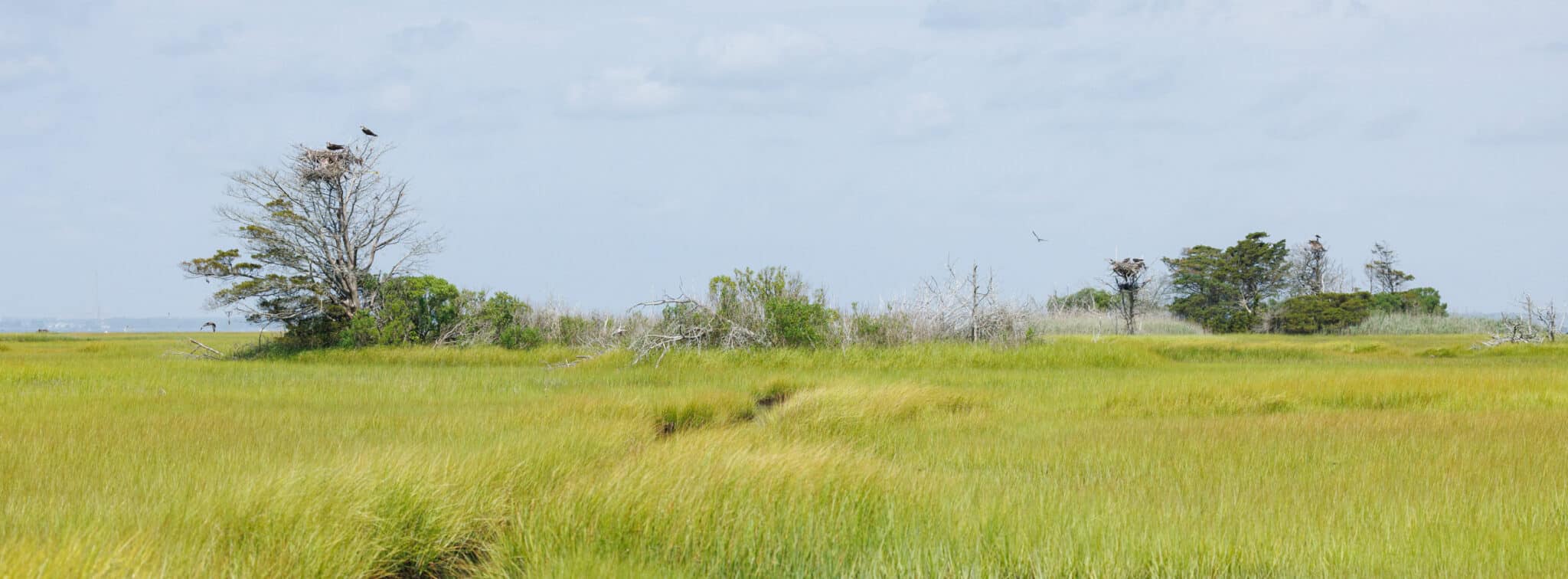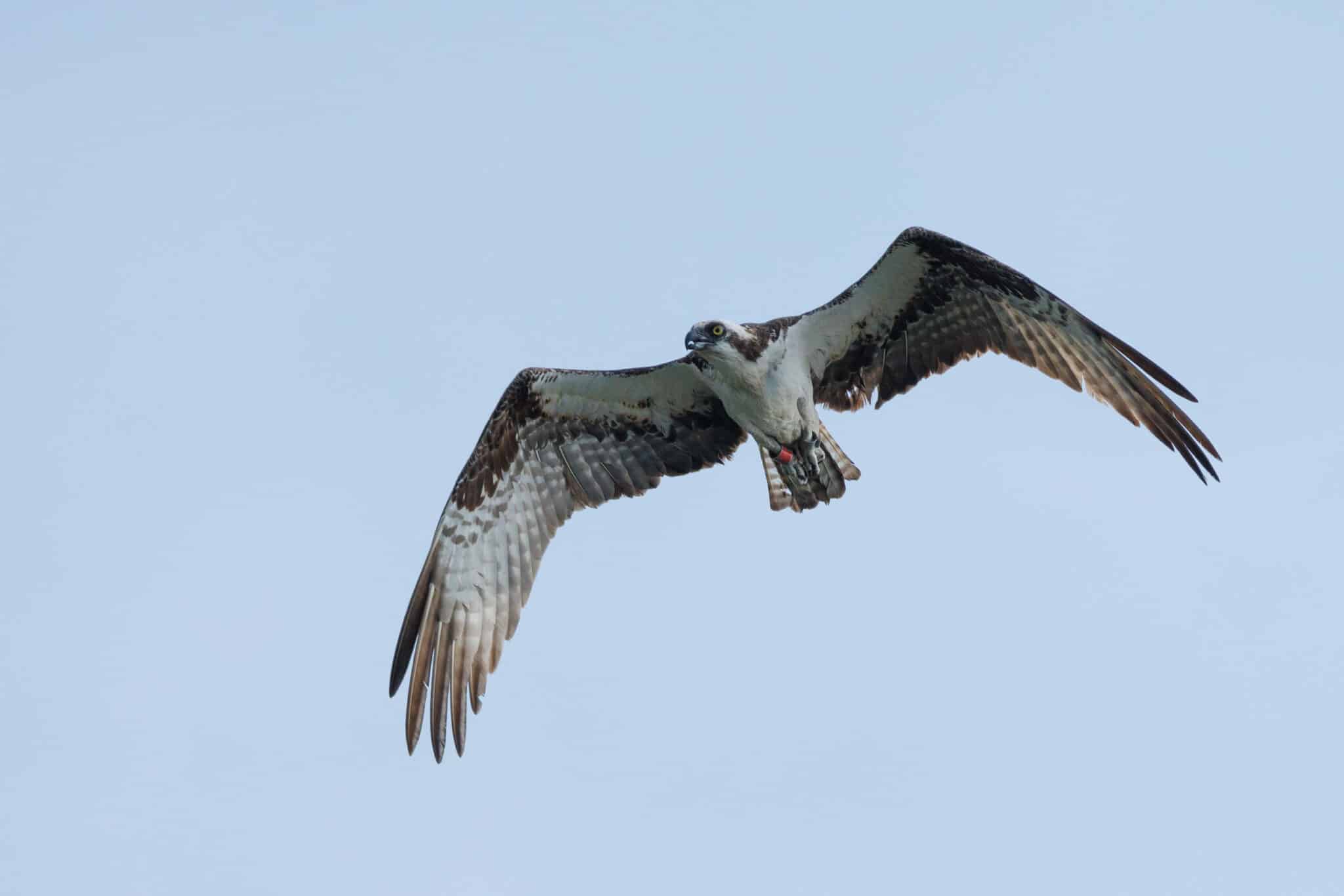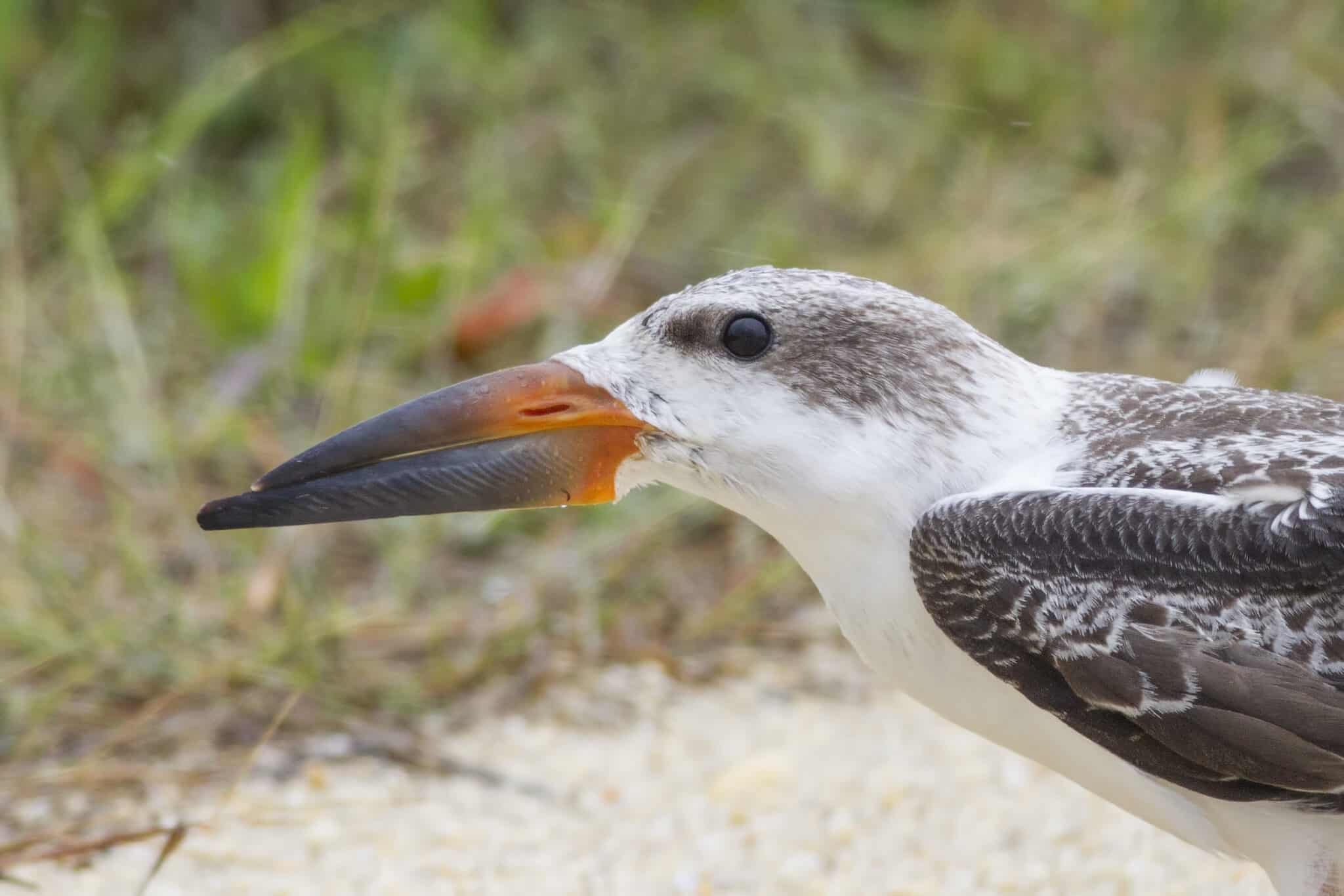Plentiful Fish and Calm Weather Give Ospreys a Boost in 2024
Ospreys are migrating north and will soon begin another nesting season in New Jersey. Earlier this year, their conservation status was upgraded from threatened to stable by NJDEP. This marks a tremendous success in the restoration of ospreys, management of their nesting structures, and vast improvements in the health of our aquatic ecosystems, and the efforts of many devoted environmental professionals and osprey lovers throughout the state. Results from 2024, show that ospreys had favorable conditions for their continued growth and success.
To track the health of the osprey population, each year project staff, volunteers, and citizen scientists collect data on nest occupancy and nest success. Most colonies are surveyed by devoted volunteers who use a ladder to access a nest and determine the outcome. Others are surveyed from a distance using optics or other visual aides, including digital cameras and unmanned aerial systems. Citizen scientists, who contribute observations of nest activity online through www.osprey-watch.org play a crucial role in determining the overall size and health of the state population, as many document nest success in areas where previous nest surveys were not conducted. Moving forward, theses passionate volunteers will play a more important role in monitoring ospreys and their continued success.

Overall, results from our surveys recorded a total of 729 nests that were occupied. The majority of nests monitored had increased productivity, which is a stark contrast from what was observed in 2022 and 2023, when most colonies had decreased productivity. This highlights how severe weather, specifically nor’easters, can affect the overall productivity of coastal nesting ospreys, where most osprey nests are located in New Jersey. With no severe weather, the average statewide productivity was normal at 1.63 young/active [known outcome] nest.
As reported last year, observations of adult females not laying eggs at prompted us to conduct some early season surveys in some colonies. A survey that we conducted on Barnegat Bay revealed that 40% of the nests surveys had no eggs or young, which normally had young in previous years. Similar findings were reported in the Great Egg Harbor colony and also in areas of the Chesapeake Bay, which is even more alarming. We still don’t know what caused the reduction in egg-laying females and delayed incubation. More investigation and future monitoring is warranted.
In general, ospreys had a productive season, with the outcome being determined in 73% of the nests surveyed in 2024. Those pairs (533) produced a total of 867 young. A total of 101 (12%) nestlings were banded for future tracking, 35 of which with both federal and red auxiliary, field readable bands at nests on Barnegat Bay. 89 nests were determined to have failed to produce young. This means they either had eggs or nestlings and they were lost.

Osprey Band Recoveries
Each year a small portion of young ospreys are banded with federal bird bands for future tracking. Encounters with banded birds is infrequent, unless they are found injured or dead, mainly because the bands are very difficult to read on live birds. With Project RedBand, an osprey banding and re-sighting project on Barnegat Bay, we have seen more encounters with live ospreys than those that are injured/dead. This is a direct result of banding birds with red “field readable” auxiliary bands, which can be read from a distance using a spotting scope or a telephoto lens on a digital camera. In 2024, 41 ospreys that were banded as nestlings were encountered. Of those, 30 were identified by their red bands, most during nest surveys conducted by CWF staff. Obtaining re-sightings of red banded ospreys helps track individual birds as they return to New Jersey to nest as adults. We can learn a lot about their life history while engaging the public in osprey conservation. Thank you to everyone who has reported red banded ospreys that they have observed!
With ospreys being listed as stable, it means they’re not at risk of becoming threatened or endangered in the near future. It does not mean we should just forget about them or walk away. Our continued efforts to monitor ospreys will help track their health and any impacts from threats like plastic marine debris to the loss of vital prey, like menhaden shifting northward from the effects of climate change. We have to continue to maintain their nest structures, which the majority of ospreys rely on to successfully reproduce.
Thankfully we have a growing group of volunteer “osprey watchers” who will help keep tabs on them in the future. As one of the largest birds of prey that nests in very close proximity to humans, especially on our heavily developed coast, creating a connection between ospreys and people is resilience. The ability to adapt to a changing landscape is crucial to our shared prosperity in this region. We must protect our open space and habitats that wildlife depend on to survival, while also allowing our human way of life to move forward.
Special thanks to everyone who donates to support our work with ospreys and to all our volunteers who help maintain their nest structures and monitor nest activity throughout the state!
